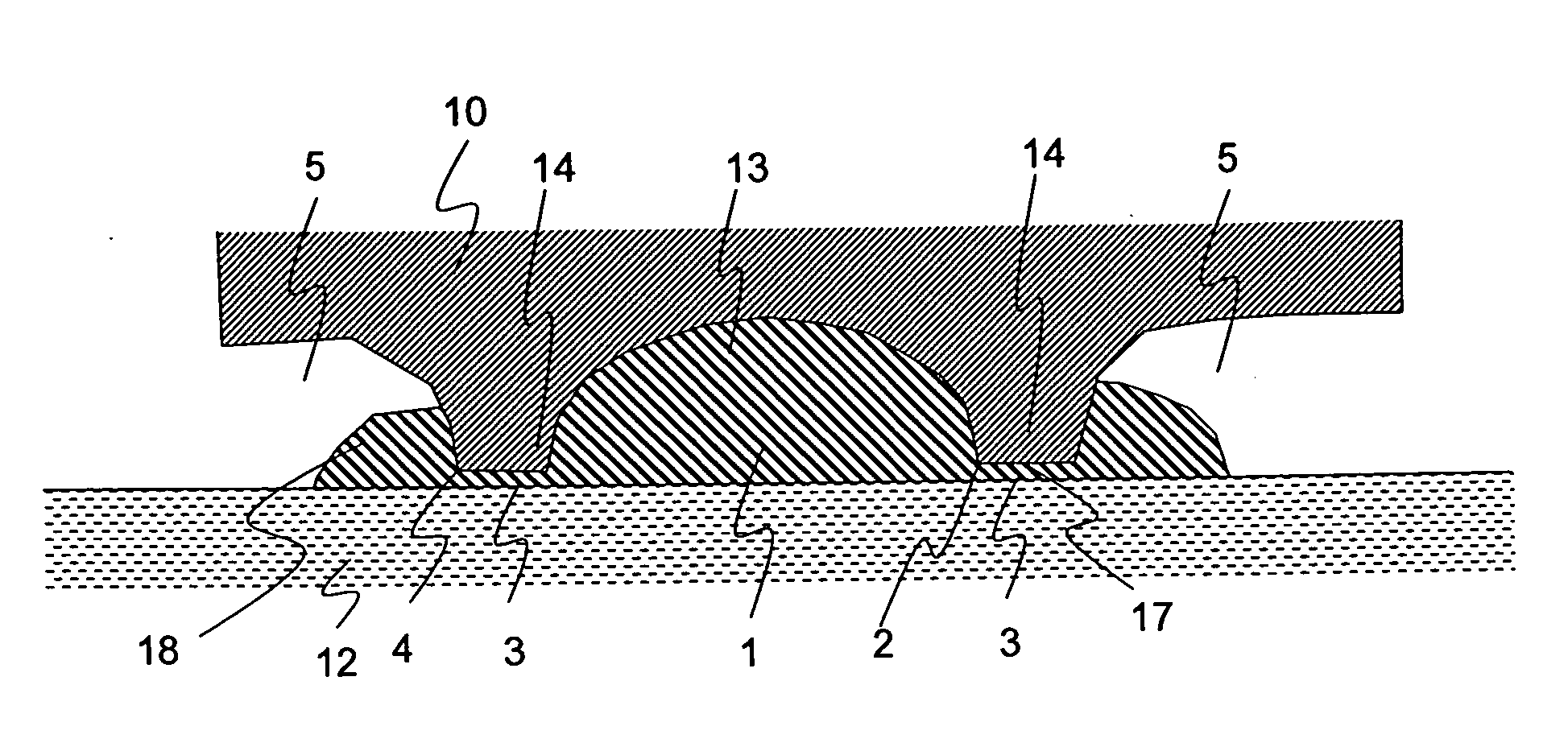Manufacturing optical elements
a technology of optical elements and mechanical elements, which is applied in the field of manufacturing miniature optical or mechanical elements, can solve the problems of residual material, difficult and costly control of small volumes of dispensed liquid or viscous material, and impair the function of the combined structure,
- Summary
- Abstract
- Description
- Claims
- Application Information
AI Technical Summary
Benefits of technology
Problems solved by technology
Method used
Image
Examples
Embodiment Construction
[0057]FIG. 1 schematically shows a cross section through a tool 10 placed on a substrate 12. The tool 10 forms a cavity 8 that defines the shape of the element to be formed by an element volume 1. In the shown case, the optical element is simply a refractive lens. The element volume 1 lies between the tool 10 and the substrate 12. It is surrounded by a protruding element of the tool 10 which here is denoted as a floating spacer 14. A flat surface 17 of the spacer runs approximately parallel to the surface of the substrate 12 and here is at a distance of about 5 μm to 15 μm therefrom. Underneath the floating spacer 14, between the flat surface 17 and the substrate 12, a small buffer volume 3 forms. Between the element volume 1 and the buffer volume 3, the tool 10 comprises an inner edge 2. Between the buffer volume 3 and an overflow volume 5, the tool 10 comprises an outer edge 4.
[0058] The main function of the floating spacer 14 is to pull out excess material by capillary forces. T...
PUM
| Property | Measurement | Unit |
|---|---|---|
| Force | aaaaa | aaaaa |
| Flow rate | aaaaa | aaaaa |
| Volume | aaaaa | aaaaa |
Abstract
Description
Claims
Application Information
 Login to View More
Login to View More - R&D
- Intellectual Property
- Life Sciences
- Materials
- Tech Scout
- Unparalleled Data Quality
- Higher Quality Content
- 60% Fewer Hallucinations
Browse by: Latest US Patents, China's latest patents, Technical Efficacy Thesaurus, Application Domain, Technology Topic, Popular Technical Reports.
© 2025 PatSnap. All rights reserved.Legal|Privacy policy|Modern Slavery Act Transparency Statement|Sitemap|About US| Contact US: help@patsnap.com



